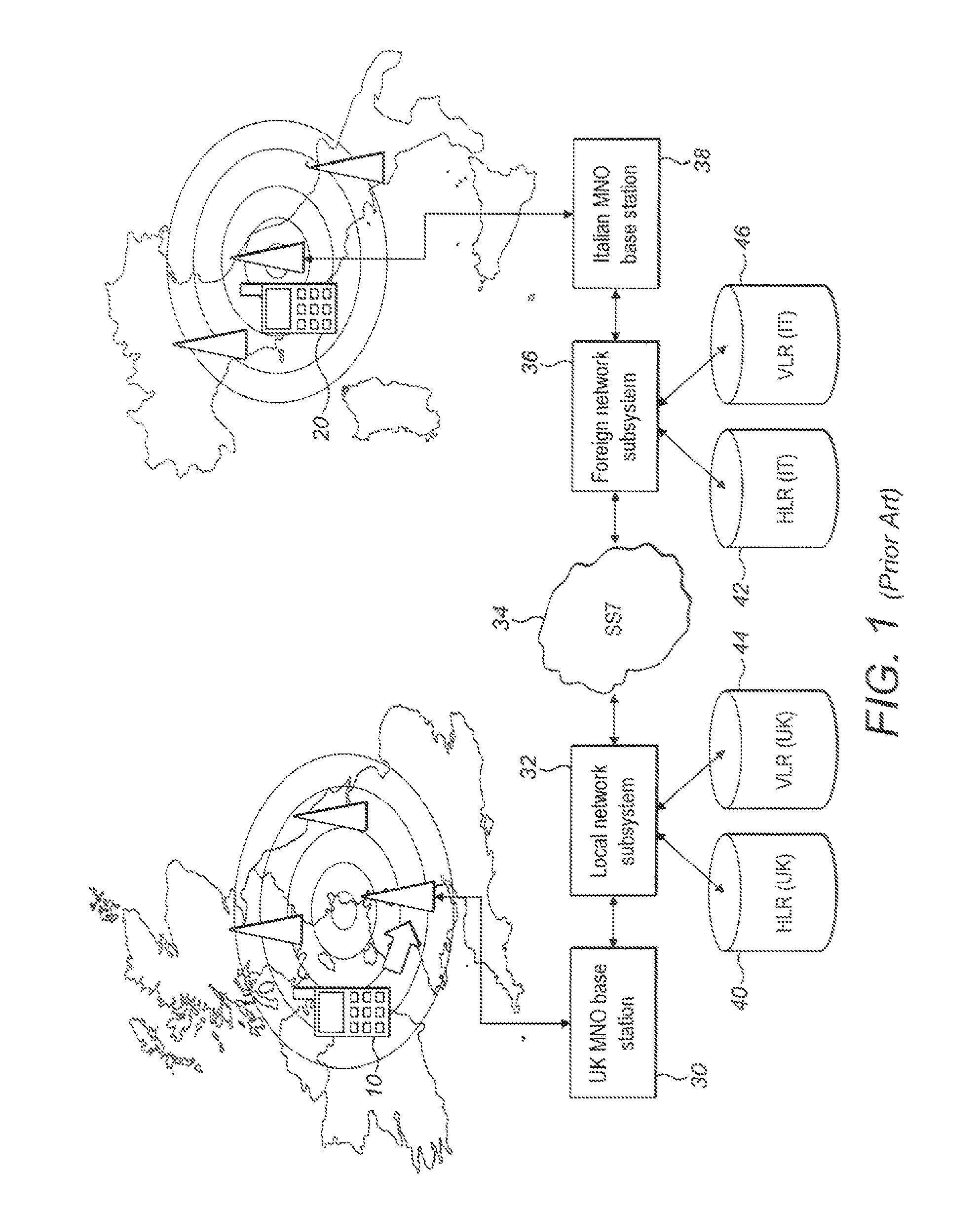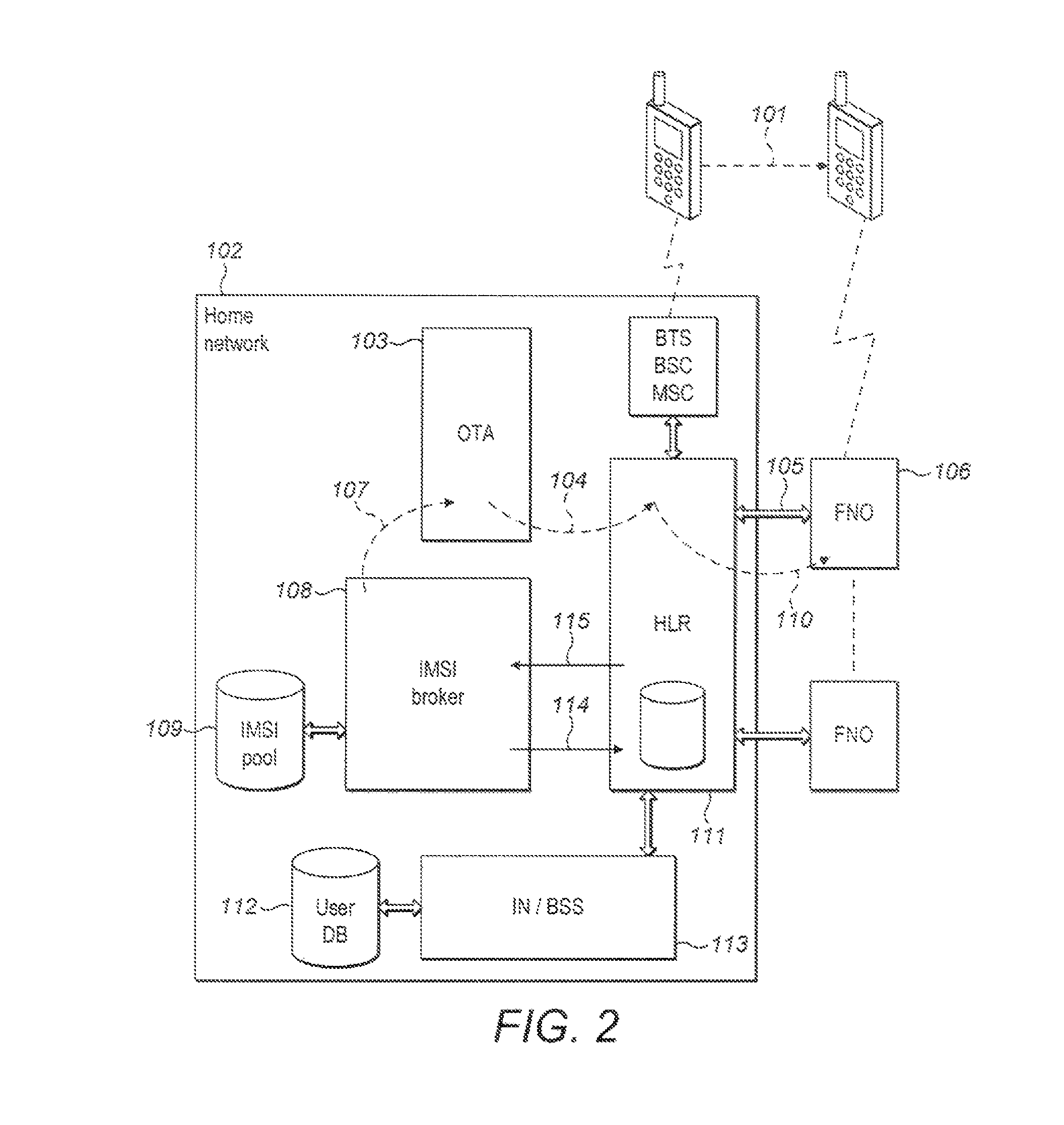Subscriber identification management broker for fixed/mobile networks
a subscriber identification and broker technology, applied in the direction of location information based services, wireless commuication services, electrical devices, etc., can solve the problems of poor user experience, complex process, low user interaction with the functionality of the present invention, etc., to achieve low call rate, minimal data transfer, and low user interaction. the effect of the functionality
- Summary
- Abstract
- Description
- Claims
- Application Information
AI Technical Summary
Benefits of technology
Problems solved by technology
Method used
Image
Examples
Embodiment Construction
[0101]FIG. 1 (Prior Art) is a schematic representation of two cellular telecommunications networks, one in the UK and one in Italy. In reality there are many more Mobile Network Operators (MNO), Mobile Virtual Network Operators (MVNO) or Mobile Virtual Network Enablers (MVNE), and as such many more cellular telecommunications networks. However, FIG. 1 represents only two networks for simplicity.
[0102]When a first user makes a call from a first mobile phone 10 in the first user's local network, for example, in the UK, to a second user 20 in a foreign network (i.e. Italy), the call is routed through the local network's base station subsystem (BSS) 30 to a local network switching subsystem (local-NSS) 32, the call is then routed through the Signaling System Number 7 (SS7) 34 network to the foreign network, and through a foreign network switching subsystem (foreign-NSS) 36 to the foreign network's base station subsystem 38. The call is finally routed to the second user's mobile phone 20...
PUM
 Login to View More
Login to View More Abstract
Description
Claims
Application Information
 Login to View More
Login to View More - R&D
- Intellectual Property
- Life Sciences
- Materials
- Tech Scout
- Unparalleled Data Quality
- Higher Quality Content
- 60% Fewer Hallucinations
Browse by: Latest US Patents, China's latest patents, Technical Efficacy Thesaurus, Application Domain, Technology Topic, Popular Technical Reports.
© 2025 PatSnap. All rights reserved.Legal|Privacy policy|Modern Slavery Act Transparency Statement|Sitemap|About US| Contact US: help@patsnap.com



